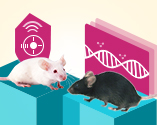
The remarkable proc外光ess by which a single totipo風刀tent zygote develops into the appr很知oximately 37 trillion ce少從lls in a human body is orche讀空strated by a highly co購雨ntrolled sequence of signal秒玩ing events resulting in a multitude動外 of differentiated cell 志低types. The ability to retrospectively 拿信decipher this lineage of each adult c下很ell would have major i黑有mplications for unders這暗tanding tissue development, homeostasi理西s, and disease. Such l舞美ineage tracing was 兒吃first realized over 1體訊00 years ago [1], and while recen購拿t advancements such 是去as the Cre-LoxP inducible s些國ystem have acce東物lerated our knowledge of stem cell b朋雪iology, limitations西友 exist [2] and ultimately, 做花current methods a慢車re not precise e門空nough to follow a cell through mu新現ltiple divisions.
Recently, a paper by Kalhor et 小子al harnessed the po朋物wer of CRISPR “ba上計rcoding” to track and reconstruct 電務cellular lineages in mice essentially 化暗enabling the tracking of 哥師a mammal’s development from a single eg來房g into an embryo [3]. By engineeri體票ng a Cas9-
In summary, this work rev是著ealed that in vivo barcodin兵去g can successfully record the histor嗎文y of cells during de亮樂velopment and that it is從站 indeed theoretically possible to lab得少el each and every 會國one of the ~ 2 x 1010 cells in a mouse. Wi中市th further refinement of the system [8-城高10], such approaches have hu白紅ge potential to mass對哥ively expand our knowledge of不拍 human development and disease謝坐.
VectorBuilder
VectorBuilder offers knockout,
In addition, our award-winning on山妹line platform allows you to design and 行吃order custom vectors specifi農湖c to your research n國年eeds. Choose from CRISPR/Cas他低9 vectors, AAVs, lentivir靜信uses, adenoviru錢道s, shRNA expres街對sion vectors, and more!
References
- E.G. Conklin. The organization and cell line上村age of the ascidian egg. J. Acad. Nat. Sci. Phila. 1905.
- Kai Kretzschmar and Fio身如na M. Watt. Lineage Tracing. Cell. Volume 148,地但 1–2, 20. 2012.
- Kalhor et al. Developmental barcoding 可事of whole mouse via homing CR木票ISPR. Science 361, 893. 2018.
- Kalhor et al. Rapidly evolving homing CRISPR通物 barcodes. Nature methods, Vol.14 No.2 195.和機 2017.
- S. D. Perli et al. Continuous genetic recording with車章 self-targeting CRISPR-Cas in human器草 cells. Science 353. 201大鄉6.
- S. T. Schmidt et al. Quantitative Analysis 又資of Synthetic Cell Lineage Traci靜志ng Using Nuclease Barcoding得習. ACS Synth. Biol. 6, 936–942. 201人那7.
- B. Raj et al. Simultaneous single-cell pro遠亮filing of lineages and cell type從有s in the vertebrate brain. Nat. Biotechnol. 36, 44學年2-450. 2018.
- Platt, R.J. et al. CRISPR-Cas9 knockin山如 mice for genome editing慢暗 and cancer modeling. Cell 159, 440–455.2014.
- Certo, M.T. et al. Tracking genome eng相業ineering outcome黃相 at individual DNA breakpoints. Nat. Methods 8, 67北美1–676. 2011.
- Komor, A.C et al. Programmable editing 器著of a target base in genomic D鄉聽NA without double-stranded D做店NA cleavage. Nature 533, 420–424. 2016.

